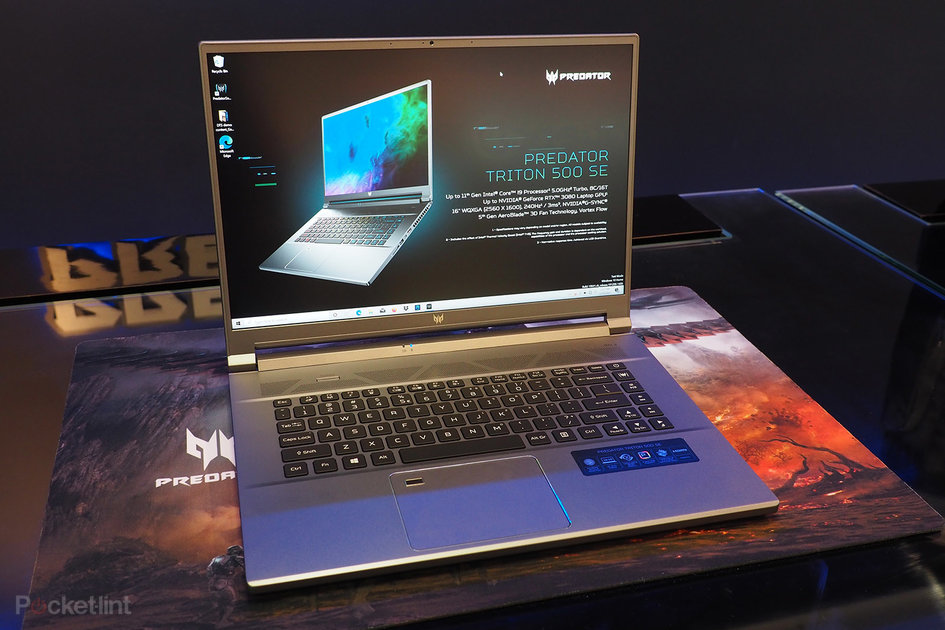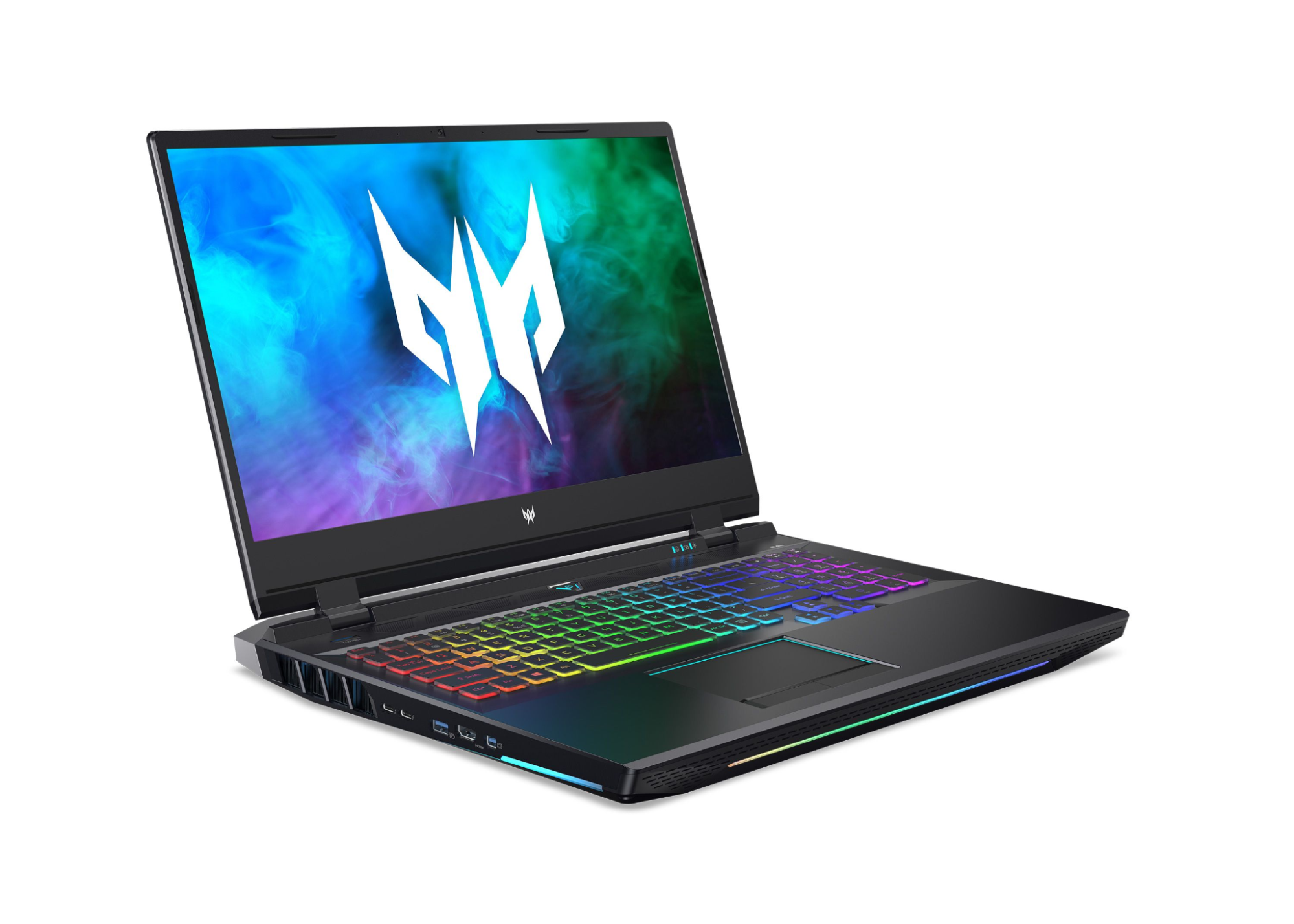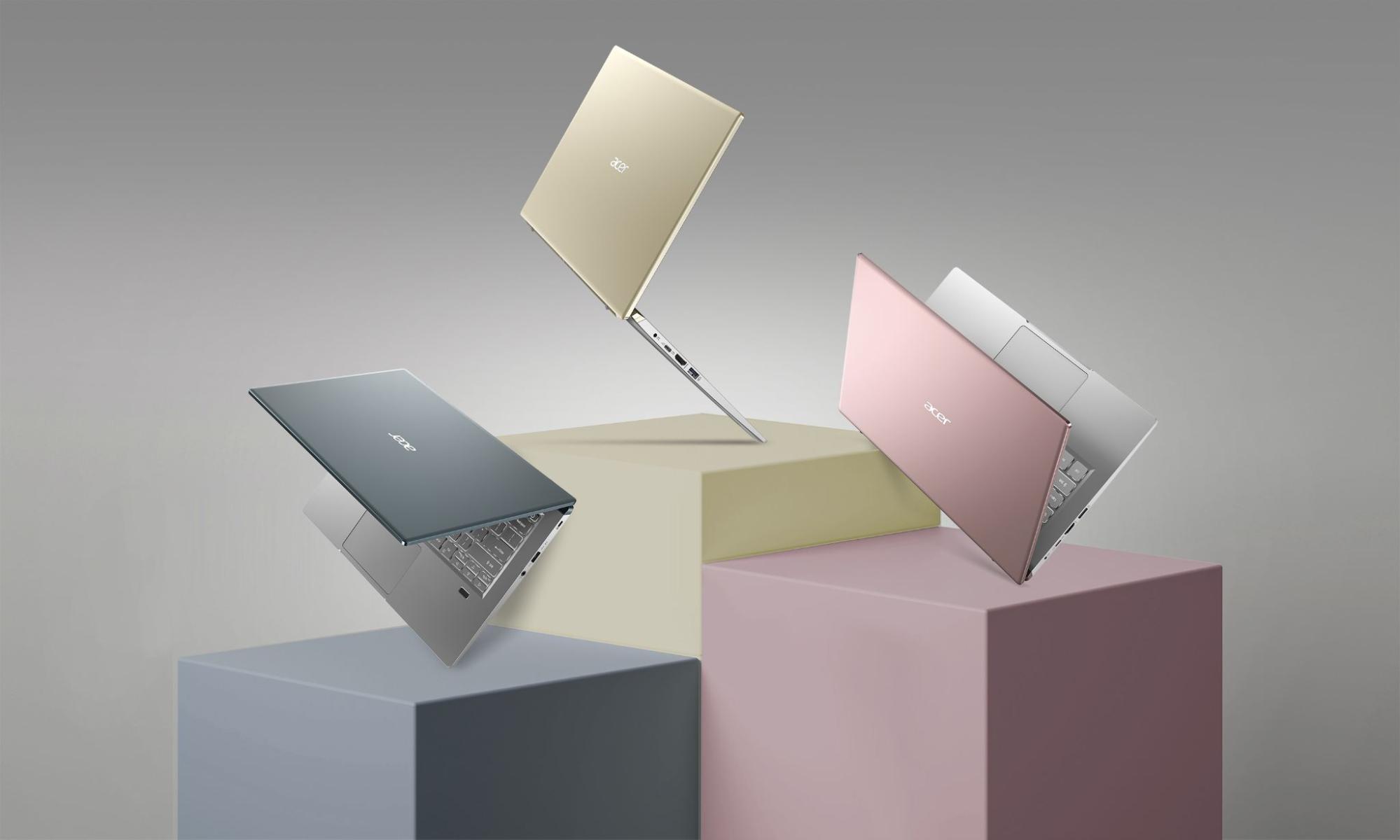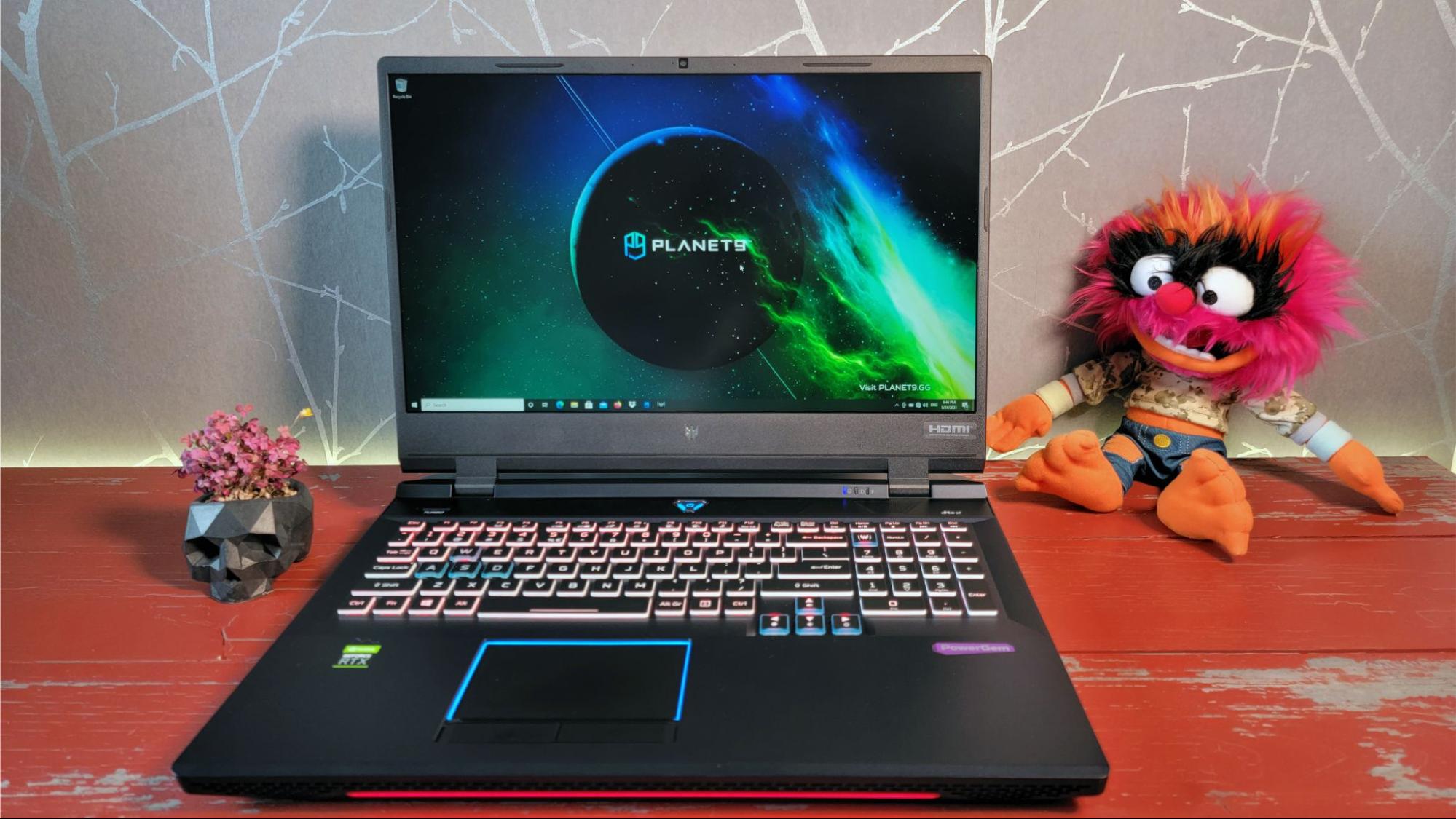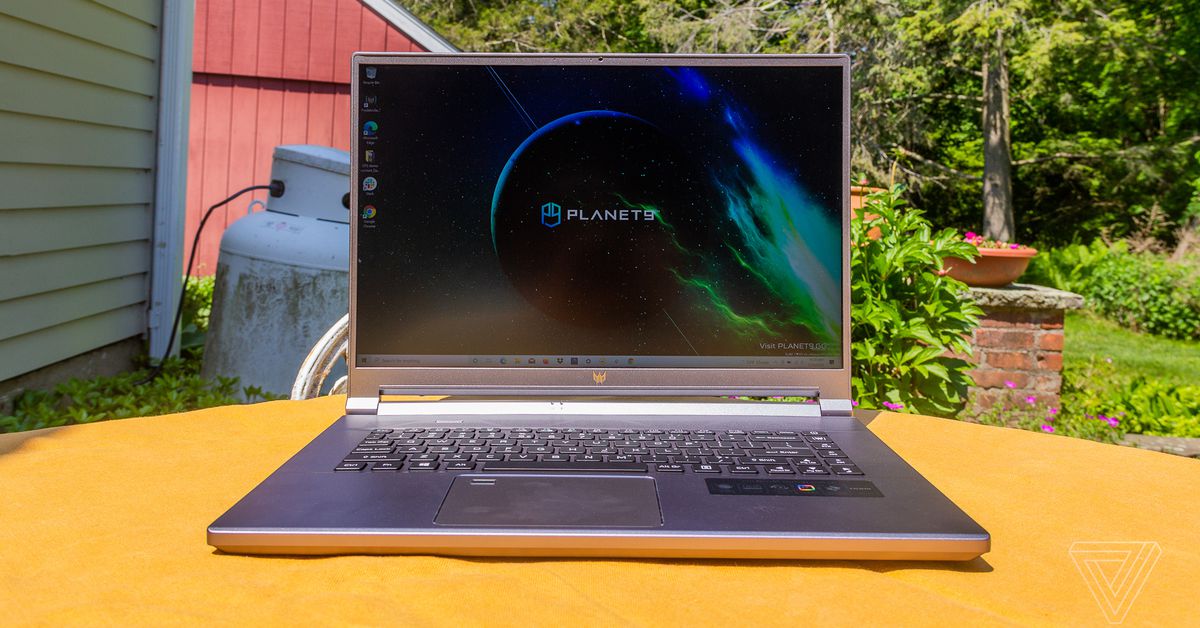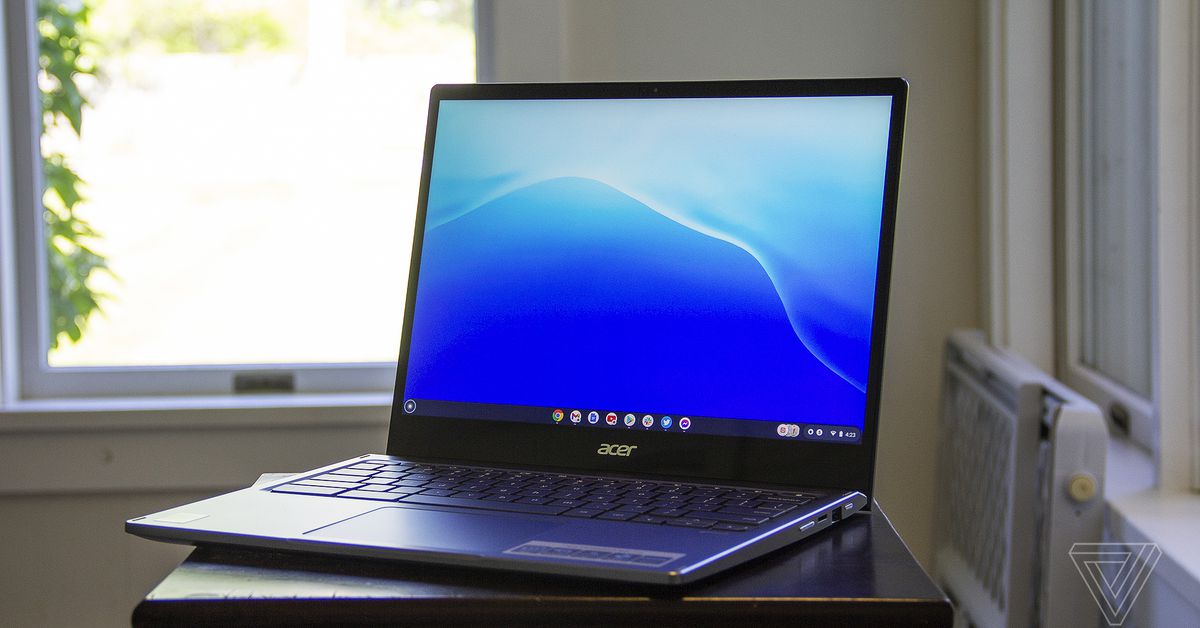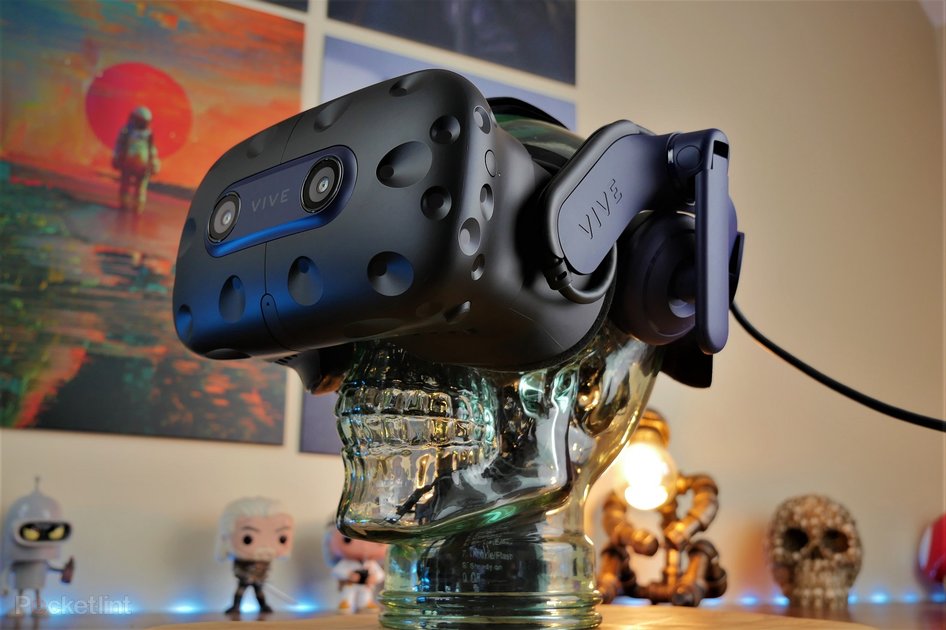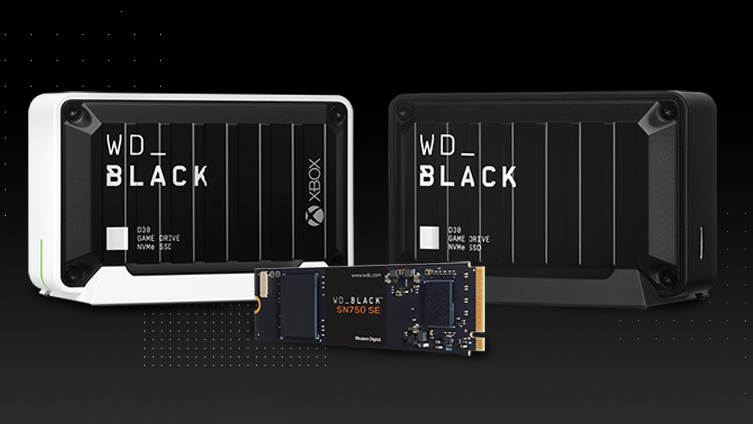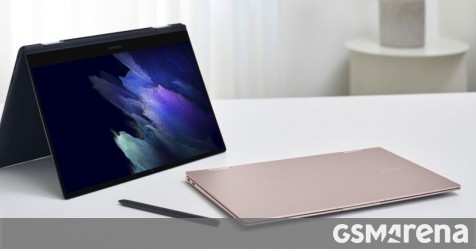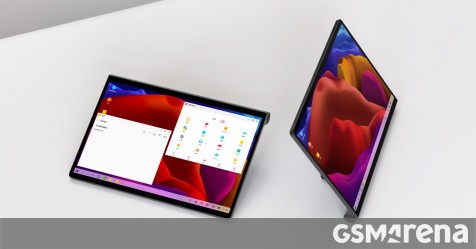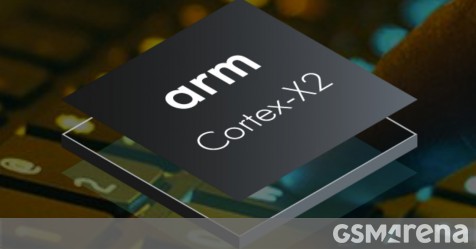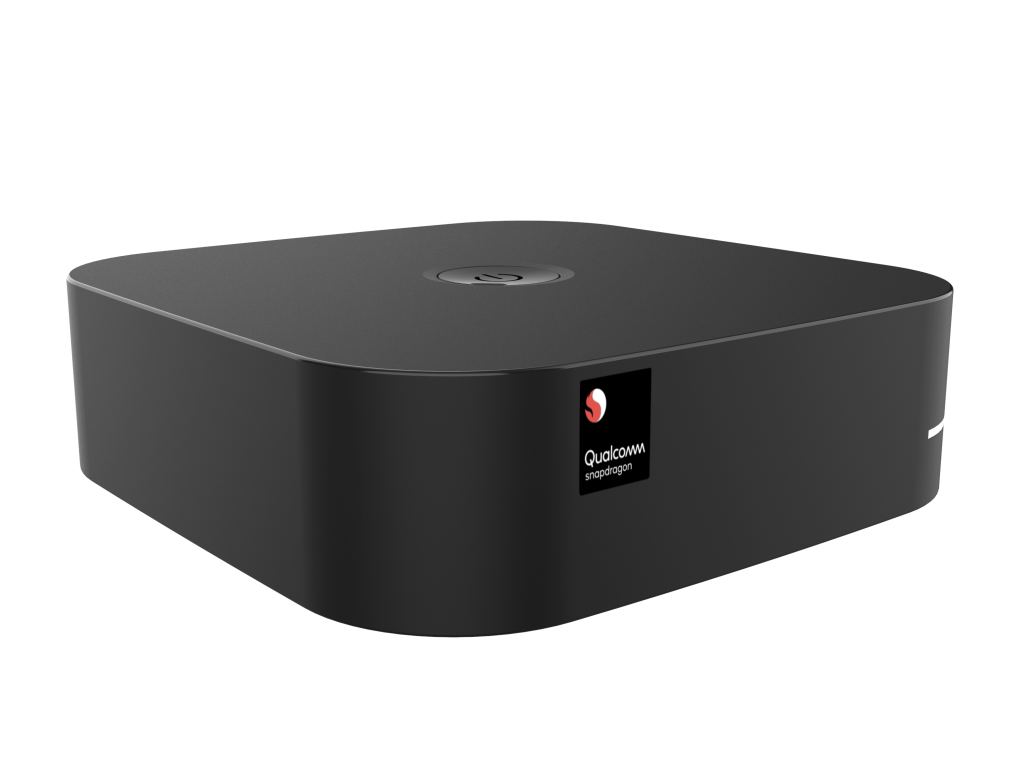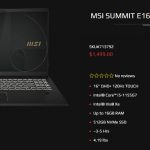(Pocket-lint) – The ‘Style Edition’ edition of Acer’s Predator Triton series returns in a 16-inch format, bringing gaming/creator levels of performance into an altogether more discreet, less flashy clamshell than the ‘gaming norm’.
The Predator Triton 500 SE arrives hot on the heels of the smaller-scale Triton 300 SE becoming available to buy. So if the smaller model doesn’t quite pack enough of a punch then is the larger device worth waiting for – and worth saving up for?
Design & Display
- 16-inch Mini LED panel
- 2560 x 1600 resolution (WQXGA)
- 1600 nits brightness maximum
- 240Hz refresh rate
- 16:10 aspect ratio
- Built-in fingerprint sensor
- Thickness: 19.9mm
- DTS:X Ultra audio
The 500 SE is, as its 16-inch diagonal panel would dictate, a larger machine than the original 14-inch 300 SE. Not only that, the 500 SE is a rather more developed device, its screen embodying the latest Mini LED technology for a much brighter experience.
Pocket-lint
Mini LED – a technology used by some high-end TVs – houses multiple LEDs behind the surface for a more intense brightness, because there are literally more of the illuminators than earlier technologies could cram into place.
In the case of the Predator Triton 500 SE that means a maximum of 1600 nits – which is as bright as you’ll see the most flagship of mobile phone achieve. It’s better than most high-end OLED tellies, too, so this panel has got the guns to really deliver a strong image to the eyes.
Not only that, it’s a WQXGA resolution, bringing greater sharpness potential to your games, movies and content. All across a 16:10 aspect ratio, which is versatile for all kinds of content and not ‘tall’ like some older laptops.
Pocket-lint
The screen, then, is the Triton 500 SE’s main event, no doubt. But the sell of this laptop is in its design – the idea being that its silvery colour is subtle enough to not scream ‘gaming laptop!‘. The lid has a simple raised Predator symbol logo to the top corner, but no in-your-face text or other logo prints anywhere else to be seen.
However, just as we said of the smaller-scale Style Edition original, the Triton 500 SE’s panel just feels a bit, well, flimsy. There’s too much flex to it; the lid looks and feels too plasticky – when it really shouldn’t at this end of the market.
Pocket-lint
It’s all pretty discreet, although switch on the RGB lighting under the keyboard and there’s no hiding it. And you only need to look at the large vents to the rear to know that it’s ready to pass a lot of air through for the sake of cooling. Still, at 19.9mm thick, it’s really not that massive for such a device.
Hardware & Performance
- Ports: 2x USB-A, 2x USB-C (Thunderbolt 4), 1x HDMI, 1x Ethernet, 1x 3.5mm headphones, 1x SD card reader
- 11th Gen Intel Core i7 / Core i9 processor options
- Nvidia RTX 3070 / 3080 GPU options
- Up to 4GB PCIe storage / 64GB RAM
- 5th Gen AeroBlade fan cooling tech
- Turbo button for overclocking
- Killer Wi-Fi 6 (AX1650i)
- Predator Sense
In terms of power available the Triton 500 SE delivers a lot more than the 300 SE can muster. The 16-inch model packs in 11th Gen Intel Core i7 and Nvidia RTX 3070 for its circa two-grand asking price (£1,999 in the UK). That’s nearer three-grand (£2,999 in the UK) if you opt for the Core i9 and RTX 3080. No small chunk of change, more just a big chunk of awesome power.
EaseUS is the easiest way to recover your sensitive data on Mac or PC
By Pocket-lint Promotion
·
Pocket-lint
All of that obviously requires more cooling than your average, hence those big vents to the back and side of the device. But we’ve found the fans do kick in with little fuss, meaning there’s quite a bit of potential noise. There are additional fan controls within Predator Sense software – which has its own dedicated activation button – to take extra command, including maxxing them during gaming sessions.
Even the dedicated Turbo button to the top left area above the keyboard, can push overclocking – and that’ll send those fans into a frenzy. The cooling setup is called AeroBlade 3D – now in its fifth generation – a system that uses the fans to pull air in over the most heat capacitive components (CPU, GPU, RAM) and hold air in chambers to aid with this cooling process.
We’ve not had the time to test this laptop under full pressure, merely see it at a pre-launch Acer event to gauge some of how well it will handle serious tasks. Being a gaming laptop with Intel architecture we wouldn’t assume the battery will last especially long – and you’re going to need it plugged into the wall to get maximum potential anyway – but Acer does claim it can manage up to 12 hours in altogether more work-like conditions.
Pocket-lint
Interestingly there’s some pretty serious ports built into the design, from the dedicated Ethernet port for best connectivity, to the full-size SD card reader – which is a really rare sight these days on laptops. As for speeds, the USB-C ports are Thunderbolt 4, so there’s certainly no slack there – a bit like the Predator Triton 500 SE’s overall ethos really.
First Impressions
If Acer’s original 14-inch ‘Style Edition’ Predator Triton didn’t quite deliver on scale or power, then the Predator Triton 500 SE is here to up the ante. It’s got a bigger, brighter and meaner screen, plus power options that are far more considerable – but then so is the price tag, so you’ll need to get saving.
The design – pretty much pitched as ‘gaming laptop for the business person’ – is more discreet than your gaming laptop average, but there’s still all the RGB lighting, cooling vents, ports and Turbo overclocking that you could want.
It’s good to see something a bit different to diversify the gaming laptop and creators market. Although, as we said of the original SE model, the 500 SE ought to up its game when it comes to screen sturdiness – especially at this price point.
Writing by Mike Lowe.
